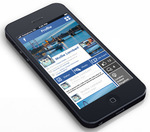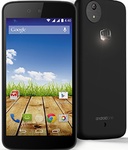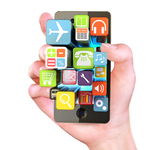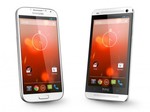iPhone SE 2020 vs iPhone SE 2016 - What’s the difference - Android
Knowing their reputation, we never though that Apple would release a budget-oriented product, especially an iPhone. But apparently, they did. First in 2013 with the iPhone 5C. And then in 2016, when the first generation iPhone SE was born. It packed the latest hardware that Apple had but placed it in a smaller and more […] More
This article, iPhone SE 2020 vs iPhone SE 2016: What’s the difference?, was originally published at NoypiGeeks | Philippines Technology News, Reviews and How to's.
Knowing their reputation, we never though that Apple would release a budget-oriented product, especially an iPhone.
But apparently, they did. First in 2013 with the iPhone 5C. And then in 2016, when the first generation iPhone SE was born. It packed the latest hardware that Apple had but placed it in a smaller and more compact body of the previous generation.
It was a proven hit to the people who want to have an iOS experience but have a limited budget to purchase the newer and more expensive models that were out in the market.
 iPhone SE
iPhone SEThat’s also the reason why people have been waiting for a follow-up to this device. And after four years of waiting, we finally got the iPhone SE 2020.
Much like its predecessor, the newer model inherits last generation’s body and the new generation’s internals. But how much really has changed? We find out in our iPhone SE 2020 versus iPhone SE 2016 specifications and features comparison.

| iPhone SE 2020 | iPhone SE 2016 | |
| Operating System | iOS 13.4 (upgradable to iOS 14) | iOS 9.3 (upgradable to iOS 14) |
| SIM | Dual SIM (eSIM) | Singl SIM |
| Display | 4.7-inch Retina IPS 1334 x 750 pixels 326ppi DCI-P3 1,400:1 Haptic touch True Tone 625-nits Dolby Vision HDR10 | 4-inch Retina IPS 1136 x 640 pixels ~326 ppi pixel density |
| Processor | A13 Bionic Chip 3rd-Gen Neural Engine | Apple A9 chip M9 coprocessor |
| RAM | 3GB | 2GB |
| Storage | 64GB 128GB 256GB | 16GB 64GB |
| Front Camera | 7-megapixel FHD@30fps | 1.2-megapixel HD video |
| Rear Camera | 12-megapixel f/1.8 up to 4K@60fps up to 240fps slow-mo OIS Stereo recording Quad-LED flash | 12-megapixel f/2.2 up to 4K@60fps up to 240fps slow-mo Dual-LED flash |
| Audio | Stereo speakers No headphone jack | Single speaker Headphone jack |
| Security | Touch ID | Touch ID |
| Connectivity | HSPA+, LTE WiFi 802.11 a/b/g/n/ac, MIMO Bluetooth 5.0 GPS, GNSS NFC w/ Reader mode Lightning port | HSPA+, LTE WiFi 802.11 a/b/g/n/ac, MIMO Bluetooth 4.2 GPS, GNSS NFC w/ Reader mode Lightning port |
| Others | IP67 | n/a |
| Dimensions | 138.4 x 67.3 x 7.3mm | 123.8 x 58.6 x 7.6mm |
| Weight | 148g | 113g |
| Body | Front: Glass Rear: Glass Frame: Aluminum | Front: Glass Rear: Aluminum Frame: Aluminum |
| Colors | Black Red White | Space Gray Silver Gold Rose Gold |
| Battery | up to 13hrs video playback Wireless charging | up to 13hrs video playback |
| Price | 64GB: Php26,490 128GB: Php30,490 256GB: Php36,490 | 32GB: Php23,590 128GB: Php29,590 |
Design
The iPhone 4 design era ended with the original iPhone SE. Actually, the boxy design and distinctive aluminum frame was supposed to end on the iPhone 5S. But when the iPhone 6s and its streamlined build came out, Apple used its hardware and revived the body of the iPhone 5s to come up with the iPhone SE.

We recently revisited the iPhone 5S and became convinced that it’s one of the best-designed iPhones ever made. It has a premium body with the right size to make it very compact and easy to use with one hand.
The iPhone SE also gave you four different colors to choose from, while the newer model is only available in three.

On the other hand, the second-generation iPhone SE uses the iPhone 8’s body and rigged it with iPhone 11’s hardware.
It’s obviously larger than the first generation, but considering how bigger the newer iPhones got, this is still the smallest Apple smartphone that you can get right now. It also brought back the TouchID, as the newer releases since the iPhone X went with a bezel-less design and relied on the FaceID that was placed on a thick notch on the top of the screen.
Display
The iPhone SE 2016 came with a small 4-inch screen and we’re fine with it back then. As stated earlier, we really liked how compact it is for comfortable one-hand usage. In fact, we kinda wish that devices with 4-inch screens would make a comeback.

But considering how most media are consumed today, going back might be tough. Possibly the smallest screen you can have is the one that the iPhone SE 2020 got, which is at 4.7-inches.
Apple could have made this device smaller if the top bezel was smaller. However, this is the same look that made the iPhone line popular since the 6 series until the 8 series, so we’re not complaining.

Since it’s a newer model, the iPhone SE 2020 gets to have a TrueTone display, Dolby Vision, and HDR10. But unlike the original iPhone 8, Apple removed the 3D Touch and replaced it with Haptic Touch. Not a lot of people used it anyway, so I guess that’s fine.
Processor
The A9 processor of the iPhone SE was fast and reliable during its time. Now that it’s four years old, and a lot of advancements already came in the industry, making the A9 unsuitable for 2020.

Obviously, you won’t have that experience on the iPhone SE 2020. It uses an A13 Bionic Chip, the same processor found on the iPhone 11 series. It’s one of the most powerful chipsets today and can easily last you for the next four to five years.
You’re also getting an extra gigabyte of RAM with the newer model. Plus, more storage options with up to 256GB. Having 16GB of storage, even 32GB, is almost not acceptable in 2020. Especially on iPhones due to the lack of storage expandability.
Cameras
Don’t get confused. Both smartphones may have the same 12-megapixel camera on paper, but it’s impossible that they use the same-exact sensor. In fact, almost all iPhones that came out poses a 12-megapixel main camera.

It’s not clear what sensor Apple actually used on the iPhone SE 2020. Although, many speculates that it’s from the iPhone XS series, XR, or even the iPhone 11.
Still, it’s obvious that the camera has gotten better since the first iPhone SE. It has notable upgrades like a brighter f/1.8 aperture, Optical Image Stabilization, stereo recording, quad-LED flash, and a sharper 12-megapixel selfie camera.
SEE ALSO: iPhone 6, 6S, 7, 8 vs iPhone SE 2020: should you upgrade?
Battery
Apple is not always about the numbers. The batteries on both smartphone might haven’t been fully revealed, but Apple promises the same 13-hours of video playback.

But since the first iPhone SE, Apple finally discovered wireless charging and added it to all of their devices since the iPhone 8.
Others
Being four years apart, the iPhone SE 2020 comes with newer features and technology that wasn’t available for the iPhone SE 2016 when it came out.

One of the most noteable one is the stereo speaker setup, which have been on iPhones since the 7 series. It’s also IP67 water and dust resistant for those with butterfingers.
Plus, the aforementioned display specs are present like TrueTone technology that automatically adjust the screen temperature depending on your ambient location. HDR 10 and Dolby Vision is also here.
Conclusion
As stated earlier, the iPhone SE and SE 2020 are four years apart. And those who have faithfully waited after all those years are in for a treat.

Apple have waited so long to come up with a “budget” iPhone with the same uncompromised performance, and an upgraded display, design, cameras, and features like wireless charging. All while maintaining an identical price of below Php30,000.
The 2020 iPhone SE with 3GB RAM and 64GB storage is priced at Php26,490 in the Philippines. On the other hand, the 2016 iPhone SE with 2GB RAM and 16GB storage originally sold for Php23,590.
This article, iPhone SE 2020 vs iPhone SE 2016: What’s the difference?, was originally published at NoypiGeeks | Philippines Technology News, Reviews and How to's.
27/06/2020 08:11 AM
Qualcomm Snapdragon 865 Smartphones in the Philippines
27/06/2020 05:22 AM
Acer reveals 2020 Swift 5 laptop and new Chromebooks
27/06/2020 02:00 AM
Pokemon GO grandpa is bigger and better with 64 phones mounted on his bike
27/06/2020 08:34 AM
Maxus PH is bringing in a new 8-seater compact MPV
27/06/2020 12:08 PM
The best Nintendo Switch accessories to take gaming to another level
27/06/2020 06:06 AM
Experience reliable internet with Eastern Home
27/06/2020 11:10 AM
Lenovo announces pre-order exclusive promo for new Legion devices
27/06/2020 07:45 AM
- HEALTH
- Comics
- Libraries & Demo
- Sports Games
- Racing
- Photography
- Transportation
- Media & Video
- Sports
- Health & Fitness
- Weather
- Medical
- Cards & Casino
- Arcade & Action
- Personalization
- Social
- Communication
- Productivity
- Casual
- Shopping
- Tools
- Brain & Puzzle
- Business
- News & Magazines
- Finance
- Lifestyle
- Music & Audio
- Entertainment
- Travel & Local
- Books & Reference
- Education







